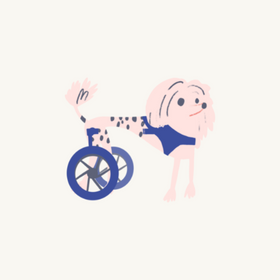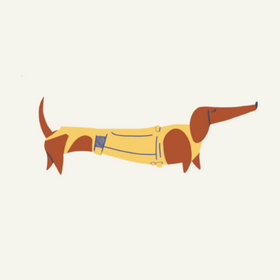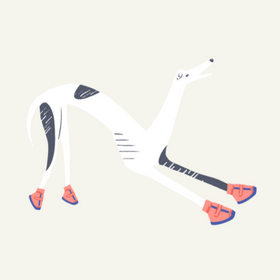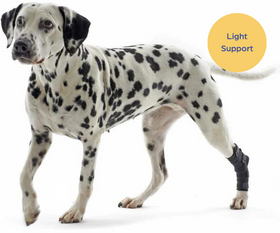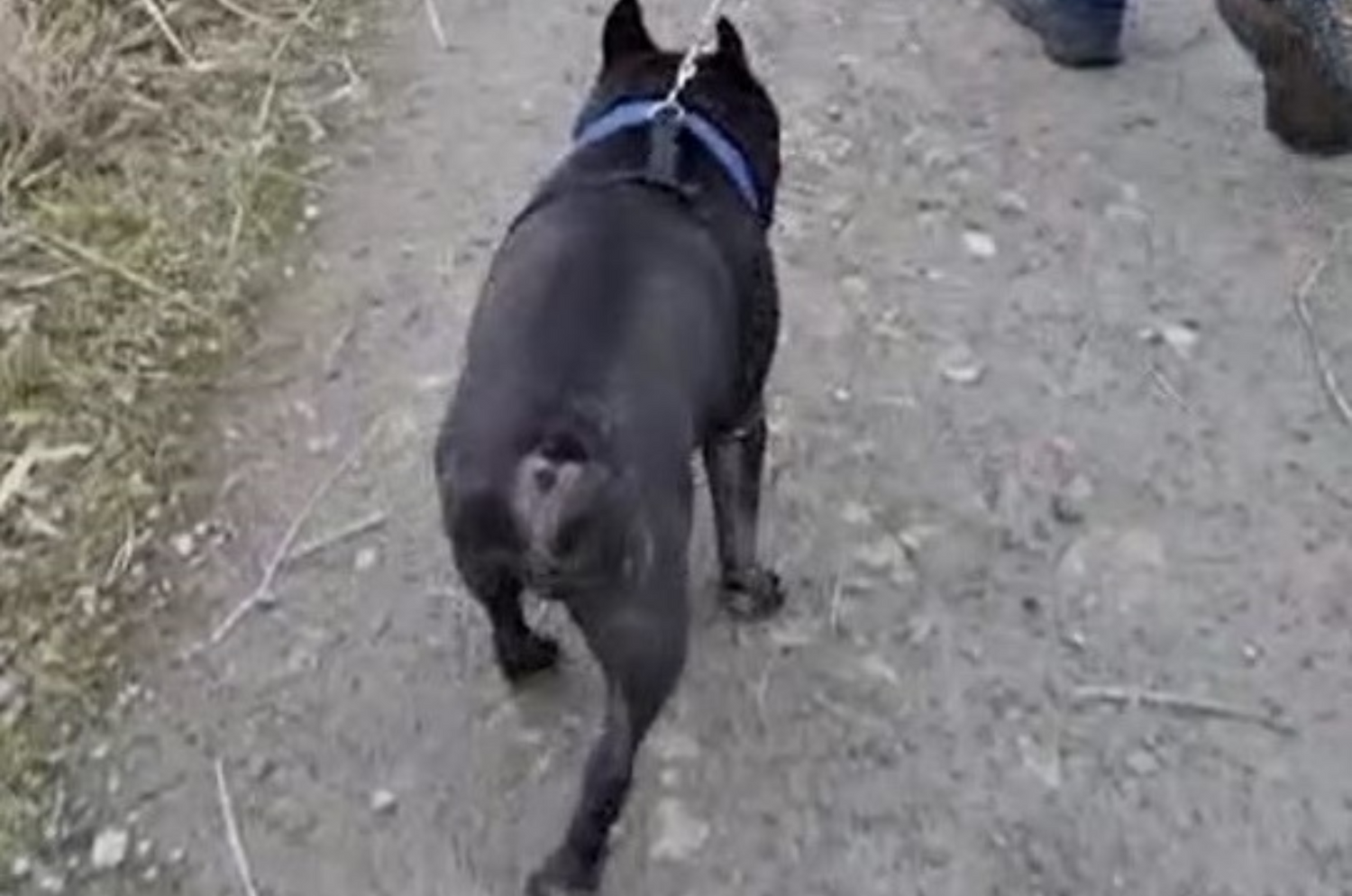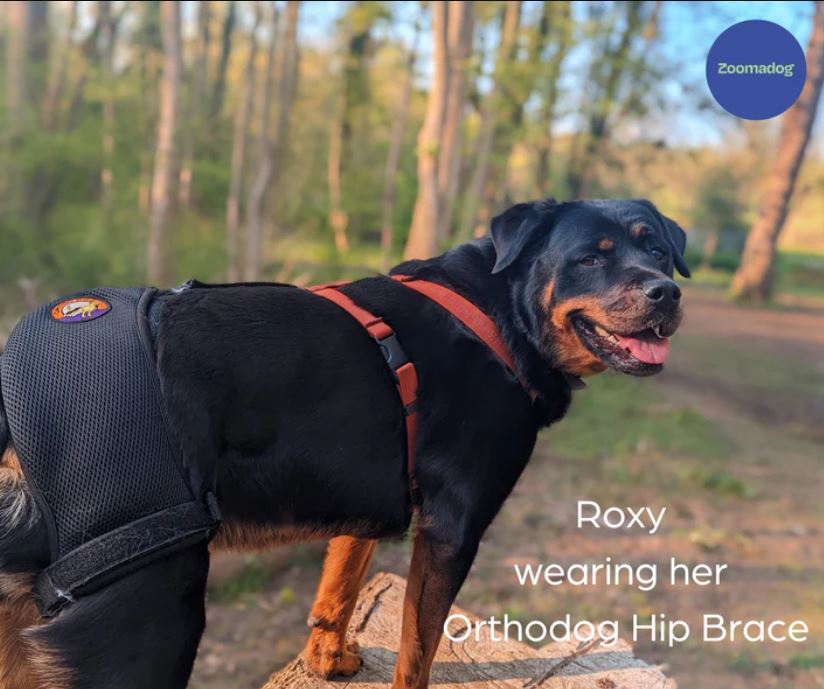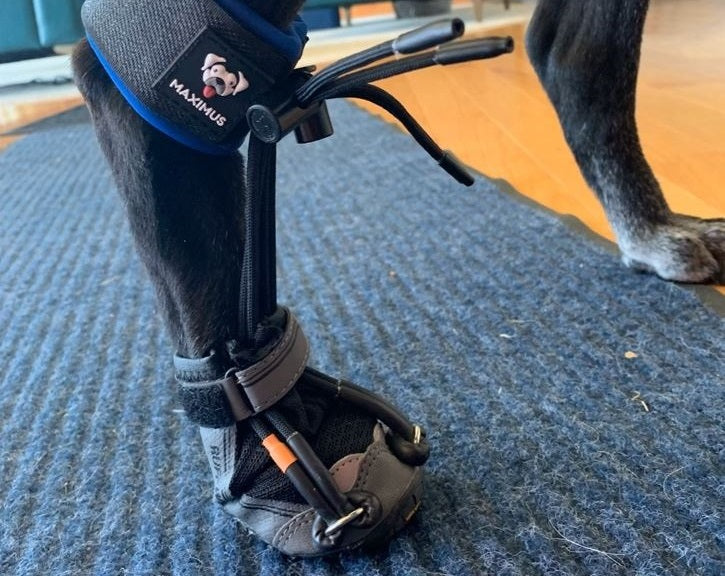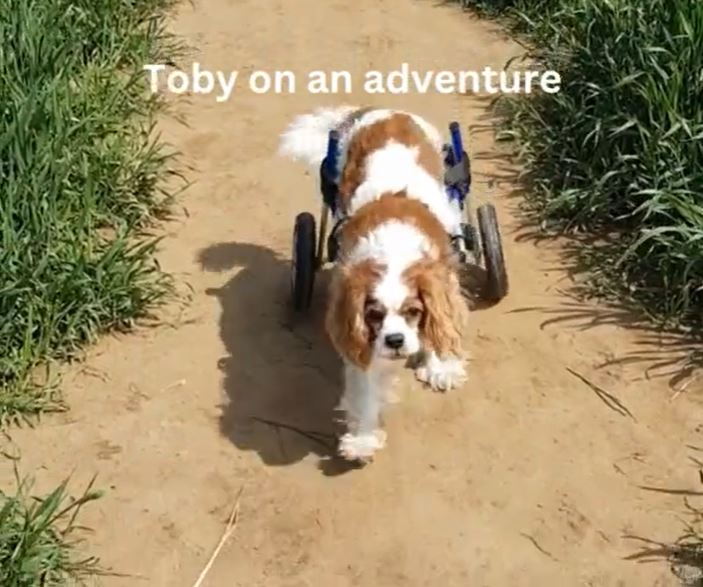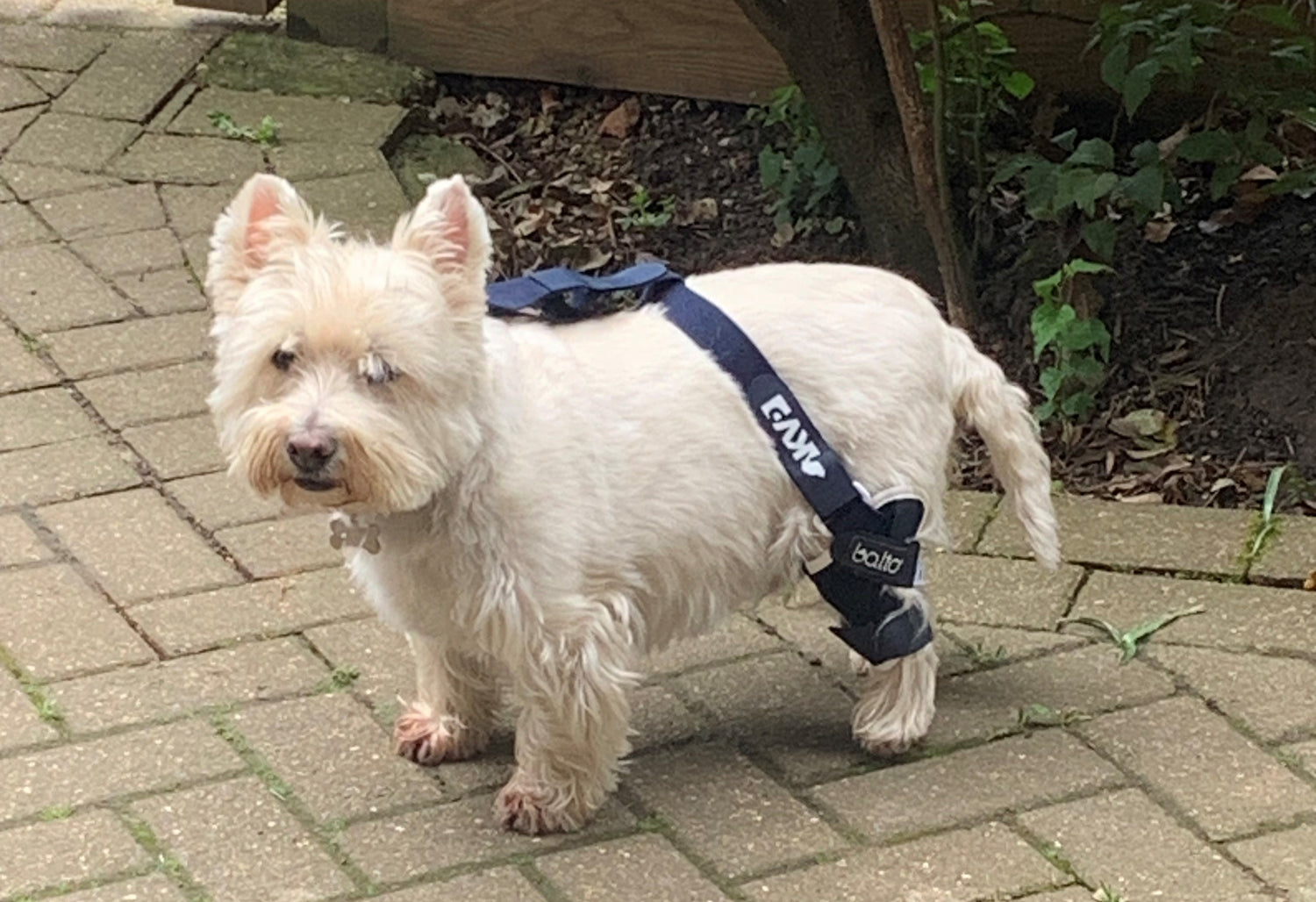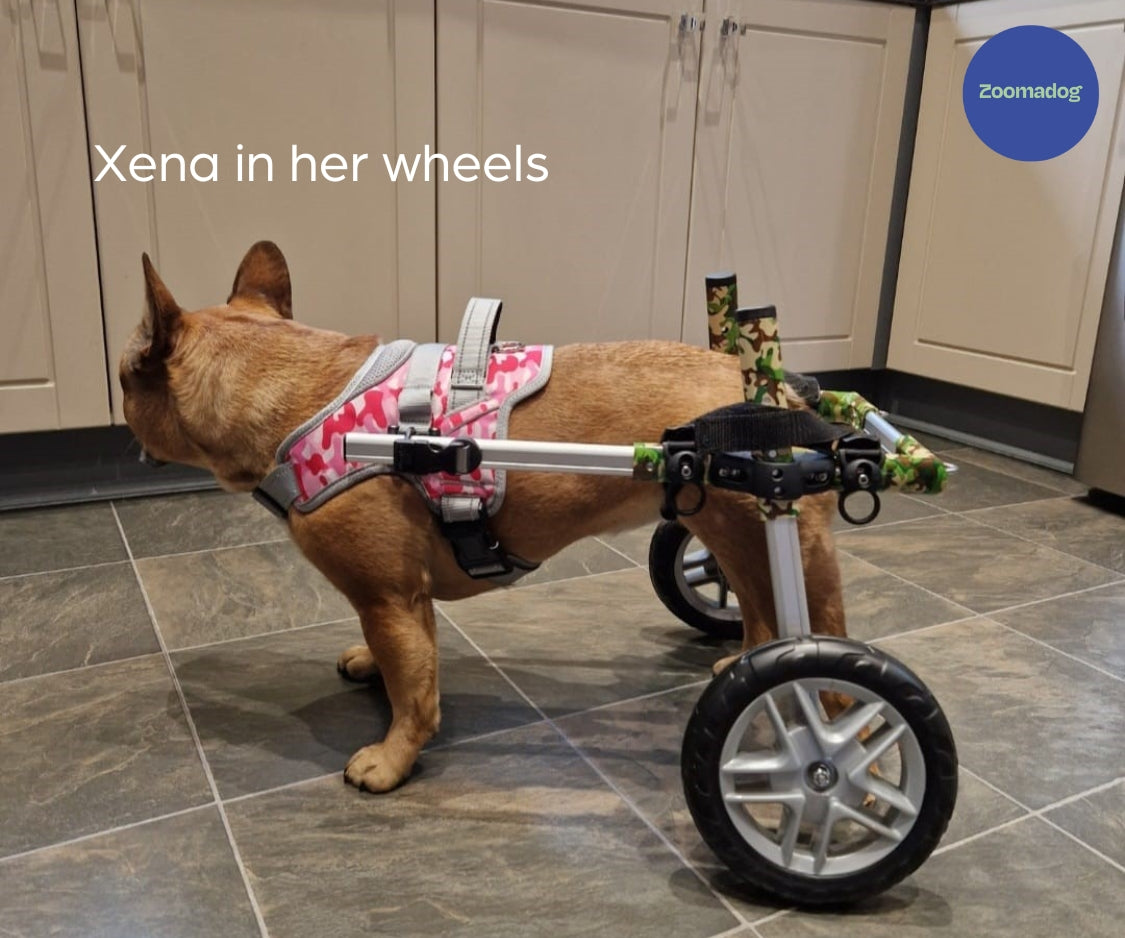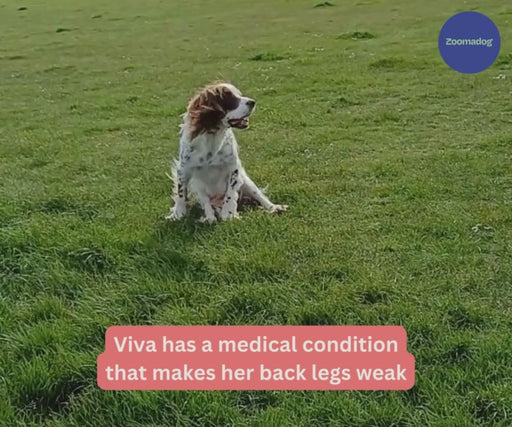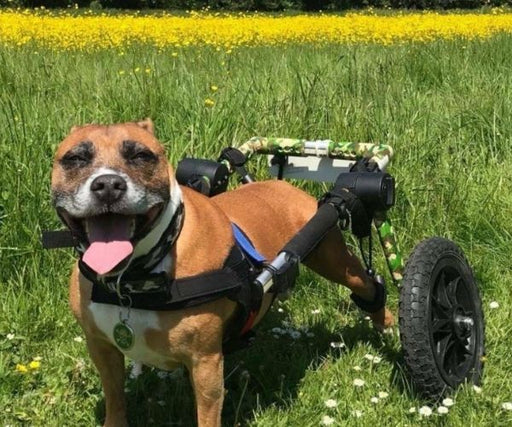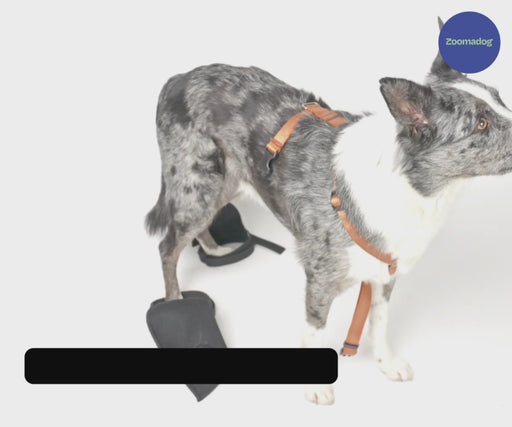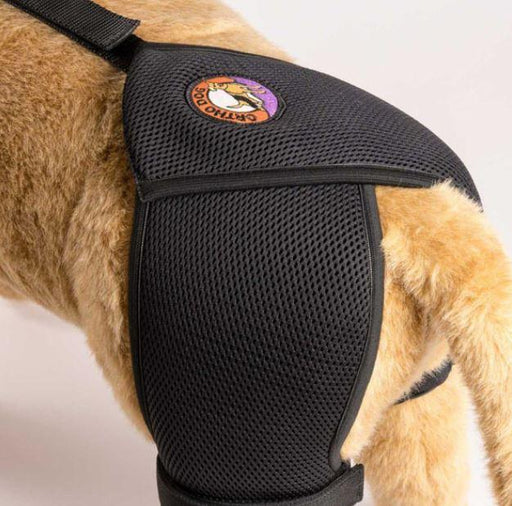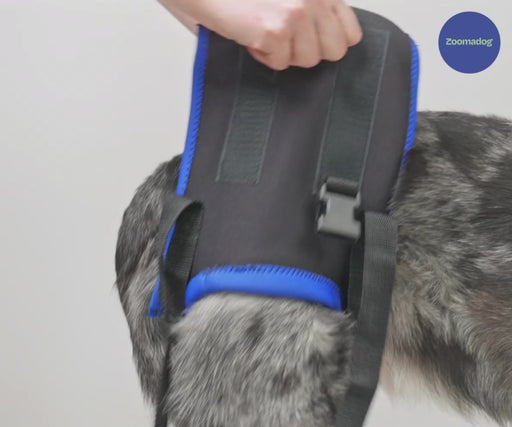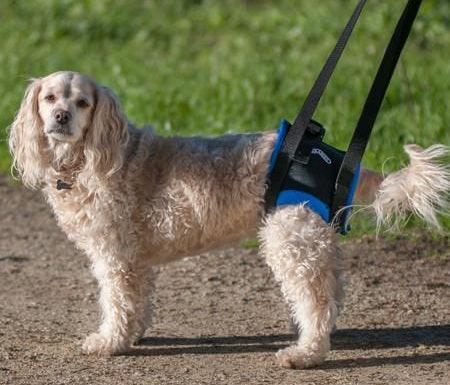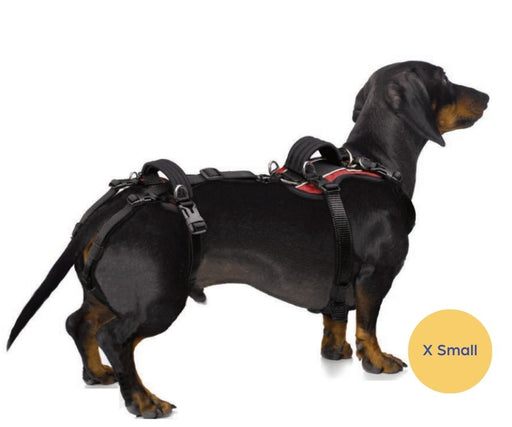Your dog’s finding it difficult to push up to standing from a lying down or sitting position. You are probably needing to give him help to stand up. When he does manage to stand, his rear legs/hips sink down. Or he may even suddenly collapse down again. Effectively, your dog’s back legs are not working.
His back legs may be shaking or trembling.
He’s having trouble walking, and finding it difficult. As your dog’s back legs are weak, it’s a struggle for him to generate the forward momentum needed to walk. He may be swaying, slipping, staggering or sliding as he walks, or his legs may be crossing over each other. He might be dragging the tops of his paws, rather than picking his paws up properly (Knuckling).
There may be muscle wastage or atrophying around his rear legs / hindquarters. Perhaps he’s licking or worrying at a particular joint in his back legs.
There may be a pronounced limp or lameness that’s obviously originating from your dog’s rear legs. Or your dog may not be able to walk at all. It might look like he’s losing his balance and his movements are uncoordinated.
He may be showing distress - crying or whimpering - when he tries to get up or walk.
In serious cases, your dog may not be able to get up at all. This can either come and go, or be permanent. Your dog may also be suffering from faecal or urinary incontinence.

